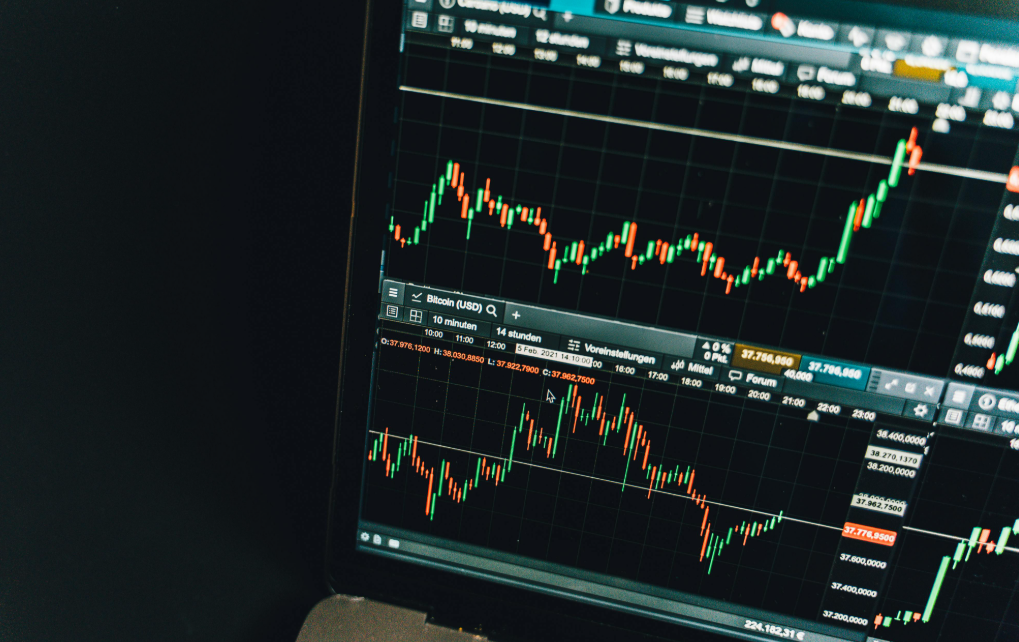- EasyCard
- Trade
- Help
- Announcement
- Academy
- SWIFT Code
- Iban Number
- Referral
- Customer Service
- Blog
- Creator
Leveraged ETFs: Analysis of High-Risk, High-Return Investment Tools and Risk Management
Leveraged ETFs are high-risk investment tools that amplify index returns through derivatives, commonly used in short-term trading to capture market volatility. While offering potential high returns, investors must be cautious of their high fees and tracking errors, and plan trading and risk management strategies carefully.
This article delves into the operational mechanisms, advantages, and disadvantages of leveraged ETFs to help investors rationally grasp trading opportunities. Whether your leveraged ETF trading focuses on the US stock market, Hong Kong stock market, or cryptocurrency market, the BiyaPay multi-asset wallet provides significant convenience for cross-market fund management through its multi-market support, US stock options and cryptocurrency futures trading functions, and fast, smooth fund deposit/withdrawal processes.

What is a Leveraged ETF?
A leveraged ETF is a fund that uses financial derivatives such as futures, options, and swap contracts to amplify the intraday returns of an underlying index. Unlike traditional ETFs that merely track index performance, leveraged ETFs typically seek to achieve 2x or 3x daily returns.
For example, if a leveraged ETF targets 3x the return of the S&P 500 Index, it should ideally rise by 3% when the index rises by 1%; conversely, if the index falls by 1%, the fund may fall by 3%. This amplifying effect can bring substantial returns but also means risks are equally magnified.
Thus, leveraged ETFs suit investors with high risk tolerance and a focus on short-term gains. Long-term holding may lead to unexpected losses due to daily resetting and accumulated fees.
How Do Leveraged ETFs Work?
Leveraged ETFs achieve their leverage targets by adjusting position ratios daily, known as daily leverage resetting. Fund managers rebalance asset allocations at the end of each trading day to maintain the specified leverage level for the next day.
This daily reset mechanism can cause leveraged ETFs to deviate from their target indices over the long term, especially during periods of high market volatility. This deviation, called “tracking error,” may result in long-term returns falling short of expectations.
Investors should understand that leveraged ETFs are primarily designed for short-term trading. Long-term holding is prone to additional losses, particularly in highly volatile markets with frequent directional changes.
What Are the Advantages and Disadvantages of Leveraged ETFs?
Leveraged ETFs are investment tools designed to amplify the daily returns of underlying indices. Their main advantage lies in helping investors quickly capture high-return opportunities during short-term market fluctuations.
Advantages:
- Return Amplification: Through derivatives, leveraged ETFs can amplify the daily returns of underlying indices, offering potential returns far exceeding traditional ETFs.
- Short-Term Speculation Tool: Suitable for traders seeking quick profits by leveraging short-term market volatility.
- High Liquidity: Typically easy to buy and sell, facilitating active trading.
- Simplified Leverage Operation: Investors can indirectly participate in high-leverage trading without directly engaging in complex derivative contracts, lowering the entry barrier.
- Alternative to Margin Trading: Can serve as a substitute for margin trading, simplifying fund management.
However, these advantages are accompanied by significant risks:
- High Expense Ratios: In addition to regular management fees, costs include derivative financing and frequent portfolio rebalancing, which continuously erode returns.
- Tracking Error: Leveraged ETFs use daily leverage resetting, meaning the fund adjusts its portfolio daily to maintain target leverage. During extreme market volatility, this mechanism causes significant tracking errors, leading to large deviations between the ETF’s performance and the expected multiple returns of the underlying index.
- Long-Term Holding Risks: Tracking errors accumulate over time, making leveraged ETFs unsuitable for long-term holding.
- High Volatility: The leverage effect significantly increases the ETF’s volatility, with risk levels far exceeding traditional funds.
- Substantial Loss Risks: If market trends reverse against expectations, investors may suffer huge losses.
Trading leveraged ETFs requires keen market insight, strong risk tolerance, and strict trading discipline. Never blindly pursue high returns—fully understand their operational mechanisms and potential risks.
What Types of Investors Suit Leveraged ETFs? How to Manage Risks?
Leveraged ETFs are not universal investment tools; they are more suitable for investors with the following characteristics:
- High Risk Tolerance: Able to withstand potential huge losses from drastic market volatility.
- Experienced: Deep understanding of market mechanisms and complex derivatives.
- Short-Term Insight: Strong ability to judge short-term market volatility directions.
Specifically, short-term traders and volatility traders are primary users of leveraged ETFs. They can leverage the leverage effect to quickly capture excess returns during market ups and downs, especially in high-volatility environments where profit opportunities for leveraged ETFs are significant. Additionally, professional or institutional investors often use leveraged ETFs for strategic asset allocation and hedging to enhance capital efficiency.
Risk Management:
Effective risk management is key to successfully using leveraged ETFs:
- Strict Stop-Loss Orders: Always set clear stop-loss points to prevent huge losses from rapid market reversals.
- Reasonable Position Sizing: Avoid overconcentrating funds in a single leveraged ETF to reduce overall portfolio risk exposure.
- Avoid Long-Term Holding: Due to daily leverage resetting and high fees, leveraged ETFs are unsuitable for long-term holding, especially in markets with unclear trends or high volatility, where long-term holding may significantly shrink returns.
How Do Leveraged ETFs Differ from Inverse Leveraged and Single-Stock Leveraged ETFs?
Leveraged ETFs come in various types, mainly divided into three categories: leveraged ETFs that amplify index gains, inverse leveraged ETFs that amplify index losses, and single-stock leveraged ETFs focused on individual stocks.
- Long Leveraged ETFs: Aim to achieve positive leverage returns on the underlying index, such as 2x or 3x daily gains/losses, suitable for investors bullish on short-term market rises.
- Inverse Leveraged ETFs: Seek negative multiple returns on the underlying index (i.e., the fund rises when the index falls), suitable for bearish investors or risk hedging.
- Single-Stock Leveraged ETFs: Focus on amplifying price movements of a single stock, with more concentrated risks and higher volatility. These suit professional investors for high-frequency trading or speculation.
Different types of leveraged ETFs have distinct risk profiles and application scenarios. When selecting, investors must clarify their investment goals, risk tolerance, and market judgments to avoid unnecessary losses from blindly following market trends while ignoring product differences.
Conclusion
As high-risk, high-return investment tools, leveraged ETFs offer the potential to amplify market returns but come with high fees and significant tracking error risks. They are primarily suitable for investors with strong risk tolerance and a focus on short-term market volatility. Reasonable trading strategy planning and strict risk management are key to reducing investment risks in leveraged ETFs.
In a multi-market, multi-asset investment environment, the BiyaPay multi-asset wallet—supporting the US stock market, Hong Kong stock market, and cryptocurrencies—provides convenient fund deposit/withdrawal services, especially for frequent trading and multi-asset allocation. BiyaPay’s efficient and smooth user experience helps investors quickly respond to market changes, optimize asset management and risk control, and steadily advance toward investment goals.
*This article is provided for general information purposes and does not constitute legal, tax or other professional advice from BiyaPay or its subsidiaries and its affiliates, and it is not intended as a substitute for obtaining advice from a financial advisor or any other professional.
We make no representations, warranties or warranties, express or implied, as to the accuracy, completeness or timeliness of the contents of this publication.




Contact Us
Company and Team
BiyaPay Products
Customer Services
is a broker-dealer registered with the U.S. Securities and Exchange Commission (SEC) (No.: 802-127417), member of the Financial Industry Regulatory Authority (FINRA) (CRD: 325027), member of the Securities Investor Protection Corporation (SIPC), and regulated by FINRA and SEC.
registered with the US Financial Crimes Enforcement Network (FinCEN), as a Money Services Business (MSB), registration number: 31000218637349, and regulated by FinCEN.
registered as Financial Service Provider (FSP number: FSP1007221) in New Zealand, and is a member of the Financial Dispute Resolution Scheme, a New Zealand independent dispute resolution service provider.




















